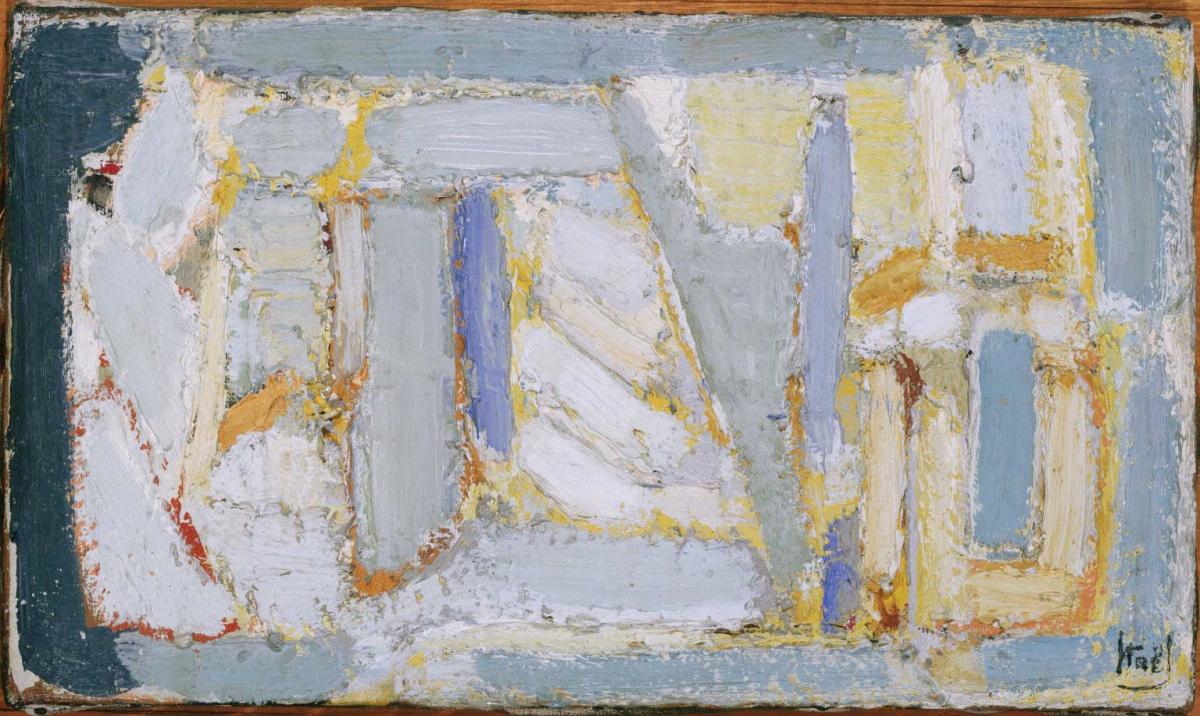North
Nicolas de Staël ( 1949 )

Born in Russia, Nicolas de Staël spent most of his life in France, where early on he discovered the work of Cézanne, Matisse, and Braque. At the outbreak of World War II, de Staël served with the Foreign Legion, from which he was demobilized in 1940. He then moved to Nice and experimented with abstraction, after becoming part of a circle of avant-garde artists there that included Sonia Delaunay and Jean Arp. In 1944, the year after he returned to Paris, Galerie L’Esquisse held his first solo exhibition. Two years later, de Staël moved into a large studio at 7 rue Gauguet where he frequently met with Braque, who lived nearby. Braque made a tremendous impression on de Staël and had a significant influence on his work, particularly in his use of richly textured surfaces and strong contrasting shapes. Much of de Staël’s work from the 1940s, like this example, features small, geometric blocks, tightly composed with a heavy impasto that has been applied with a palette knife.
In 1950, American dealer Theodore Schempp drove to The Phillips Collection with a group of de Staël’s paintings in the back of his station wagon, leading to the purchase of this work. It is the first example by de Staël to enter an American museum collection. In 1953, Duncan Phillips hosted de Staël’s first US solo exhibition. By the end of that year, he had acquired six paintings by the artist.